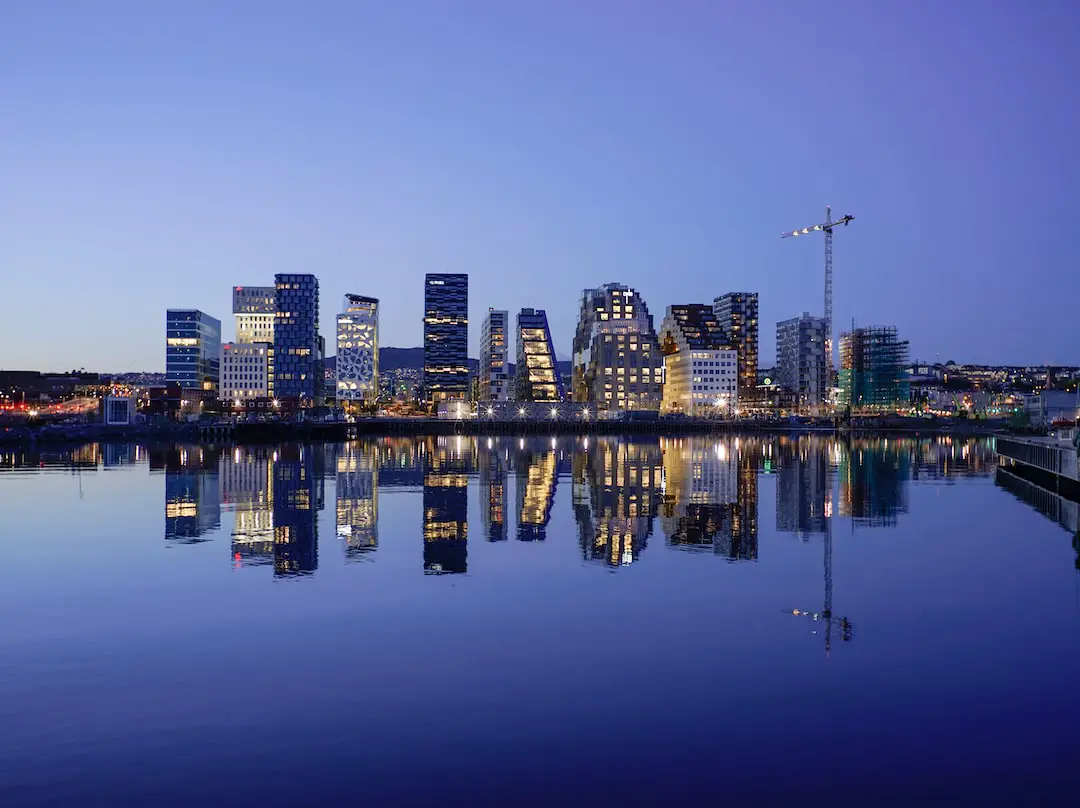
Oslo, a city nestled between the blue waters of the Oslofjord and the greenery of its hills, has a story to tell through its architecture. It’s a tale of transformation, from the sturdy medieval stone buildings to the sleek contemporary designs that now punctuate its skyline. As someone who’s wandered these streets and marveled at the city’s structural metamorphosis, I’ve seen firsthand how each era has left its mark, creating a mosaic of styles that not only reflect Oslo’s history but also its progressive spirit.
The Medieval Roots
Let’s start where it all began. Oslo’s architectural journey can be traced back to the Middle Ages. The city’s oldest surviving building, the Oslo Cathedral, originally built in 1697, stands as a testament to the city’s resilience. Its baroque style, with hints of gothic influence, has witnessed countless events and has been a steadfast symbol through the city’s evolution.
Rise of Functionalism
Fast forward to the 20th century, and you’ll notice a shift. The functionalist movement, which emphasized simplicity and functionality, began to shape Oslo’s cityscape. Buildings like the Oslo City Hall, completed in 1950, showcase this era’s preference for practicality over ornate design. Its austere brick facade and towering twin spires are iconic, reflecting the social democratic values of the time.
Post-War Modernism
After the war, Oslo, like many European cities, needed to rebuild. This period saw the rise of modernist architecture, with its clean lines and lack of ornamentation. The Regjeringskvartalet, a government building complex, is a prime example. It’s a symbol of the city’s post-war optimism and a nod to the future.
The Contemporary Scene
Today, Oslo is a canvas for contemporary architects. The city’s waterfront area, once an industrial port, has been transformed into a district of modern marvels. The Oslo Opera House, with its sloping white marble roof, invites visitors to walk on its surface and enjoy panoramic views. It’s a bold statement of accessibility and openness, mirroring Norway’s egalitarian principles.
Sustainable Innovations
Oslo’s commitment to sustainability has also shaped its architecture. The Barcode Project, a row of narrow high-rise buildings, not only provides a striking visual but also adheres to strict environmental standards. These buildings are designed to maximize sunlight and reduce energy consumption, setting a precedent for eco-friendly design.
FAQs
- How has Oslo’s architecture changed over the years?
Oslo’s architecture has evolved from medieval stone structures to functionalist designs in the 20th century, followed by modernist influences and now, cutting-edge contemporary buildings that prioritize sustainability.
- What are some must-see architectural landmarks in Oslo?
Don’t miss the Oslo Cathedral, Oslo City Hall, the Regjeringskvartalet, the Oslo Opera House, and the Barcode Project. Each represents a significant period in Oslo’s architectural history.
- How does sustainability play a role in Oslo’s architecture?
Sustainability is a key factor in new developments. Projects like the Barcode emphasize energy efficiency and environmental responsibility, reflecting Norway’s commitment to green living.
Conclusion
In conclusion, Oslo’s architecture is a rich tapestry that weaves historical significance with contemporary innovation. From the medieval Oslo Cathedral to the modern marvels like the Opera House, the city’s buildings tell a story of resilience, functionality, and a forward-thinking approach to design. As Oslo continues to grow, its commitment to sustainability ensures that its architectural legacy will not only be about beauty but also about a harmonious relationship with nature. For anyone interested in the evolution of urban design, Oslo offers a fascinating case study that’s well worth exploring.
By understanding Oslo’s architectural journey, we gain insight into the city’s past and present, and perhaps, a glimpse into its future. Whether you’re an investor, a homeowner, or simply an admirer of urban landscapes, Oslo’s architecture is a testament to the city’s enduring spirit and its ability to adapt and innovate. It’s a city that has mastered the art of transformation, and I can’t wait to see what the next chapter holds.